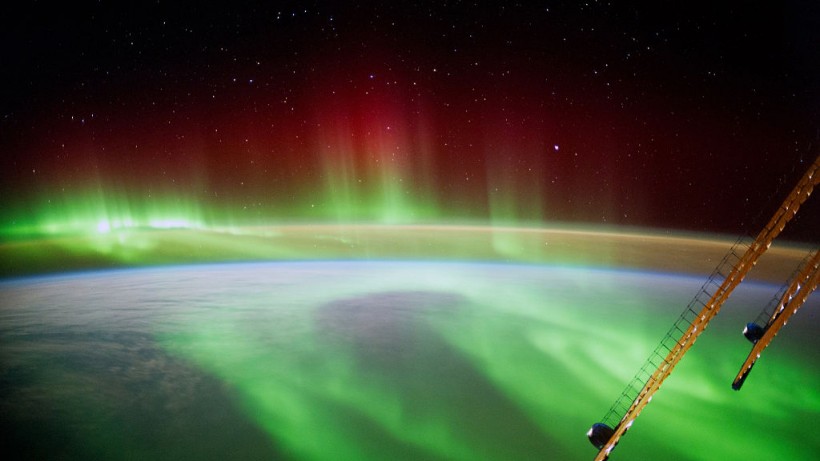NASA astronaut Josh Cassada, who is aboard the International Space Station (ISS), tweeted a photo of the northern lights on February 28 to show how they look like from space.
According to Live Science, charged particles, such as electrons and protons, generate small flashes that fill the sky with one of the most spectacular natural occurrences on Earth when they hit with gases in the upper atmosphere. Cassada's photo showed that auroras may seem better when seen from 250 miles (400 kilometers) above the globe.

In this handout photo provided by the European Space Agency (ESA) on September 9, 2014, German ESA astronaut Alexander Gerst took this image of an aurora as he circled Earth whilst aboard the International Space Station (ISS).
'Absolutely Unreal': Auroras Seen From Space
Cassada characterized his experience of capturing the aurora in two words: "Absolutely unreal." The image shows the aurora, city lights on Earth and solar arrays that are part of the space station.
Absolutely unreal. pic.twitter.com/pah5PSC0bl
— Josh Cassada (@astro_josh) February 28, 2023
While the ethereal green light will be recognizable to anybody who has seen an aurora in photos or in person, Cassada's unusual vantage position demonstrates just how far-reaching the phenomena can be, ranging from hundreds to thousands of kilometers around Earth's poles.
It is known that auroras are created by charged particles colliding with the highest levels of the Earth's atmosphere. But the Earth's magnetic field directs these charged particles mostly to the planet's poles, as per Indian Express. The magnetic field's shape causes "aurora ovals" to occur over the planet's North and South Magnetic Poles.
For those who are not able to see the aurora from the space station, the best way to see it is to travel to regions in the extreme north of the earth, such as Greenland, Norway, Sweden, Finland, and others to see the northern lights or aurora borealis. Meanwhile, southern lights or aurora australis may be seen best from Tasmania, Australia, and New Zealand on the other side of the globe.
Why Are There More Auroras Now?
The solar activity that creates these auroras has been increasing in recent days, according to The Weather Network. On Friday, February 24, a coronal mass ejection (CME), or solar explosion, occurred along with a fast-moving solar wind, resulting in a geomagnetic storm.
As a result, auroras were visible in places where they would not have been otherwise, such as the United Kingdom. Just recently, a pilot flying a commercial airline from Iceland to Manchester performed a rare 360-degree spin to provide passengers with a view of the beautiful northern lights as they lit up the country's skies.
Adam Groves, one of the passengers, shared on Twitter some of the photos of the aurora from the sky and added that it was a perfect addition to his proposal to his girlfriend.
Space.com explains that the Sun has been extremely volatile recently, with two CMEs crashing into the planet on February 26 and 27, sending a quick rush of charged particles that most likely produced the massive aurora seen from space by Cassada.
As the Sun reaches the peak of its 11-year activity cycle, which is presently predicted to occur in 2025, CMEs become more prevalent. Solar activity has increased substantially in recent months, with massive solar flares erupting from our star's surface every few days.
They are mostly harmless to people, but extremely powerful CMEs can destroy satellites, create radio blackouts, and even cause power system failures on Earth. Astronomers keep a close eye on the sun for indicators of such ejections and occasionally see the sun return their smile.
RELATED ARTICLE: French Astronomer Thomas Pesquet Captures Stunning Aurora Glowing To Earth From ISS
Check out more news and information on Space in Science Times.














